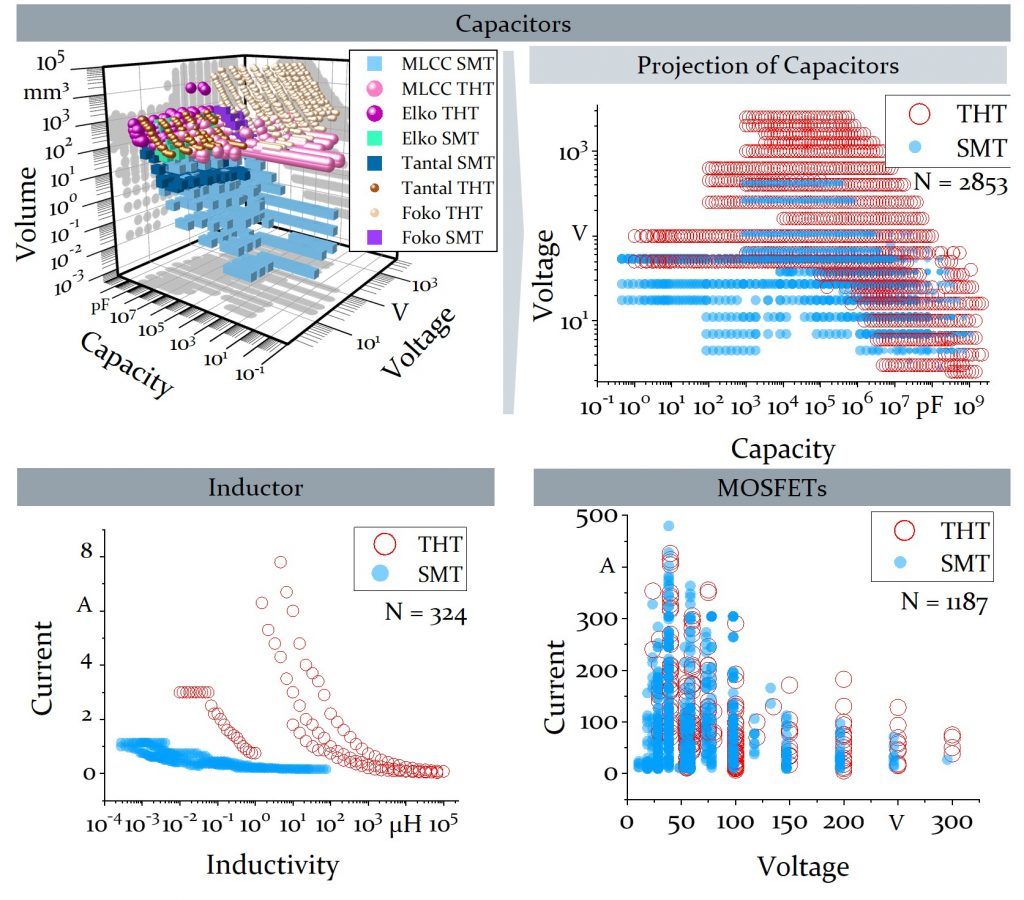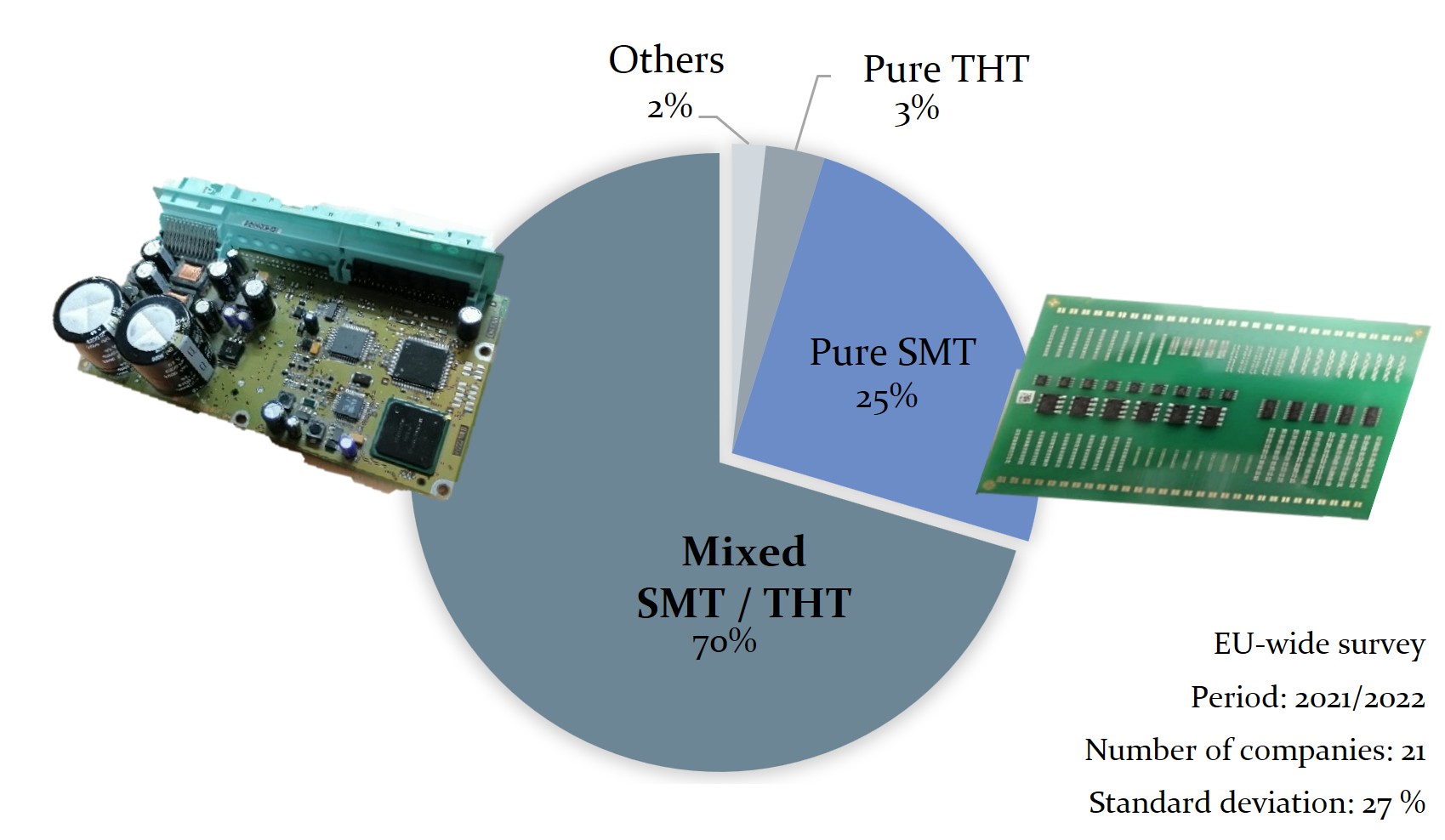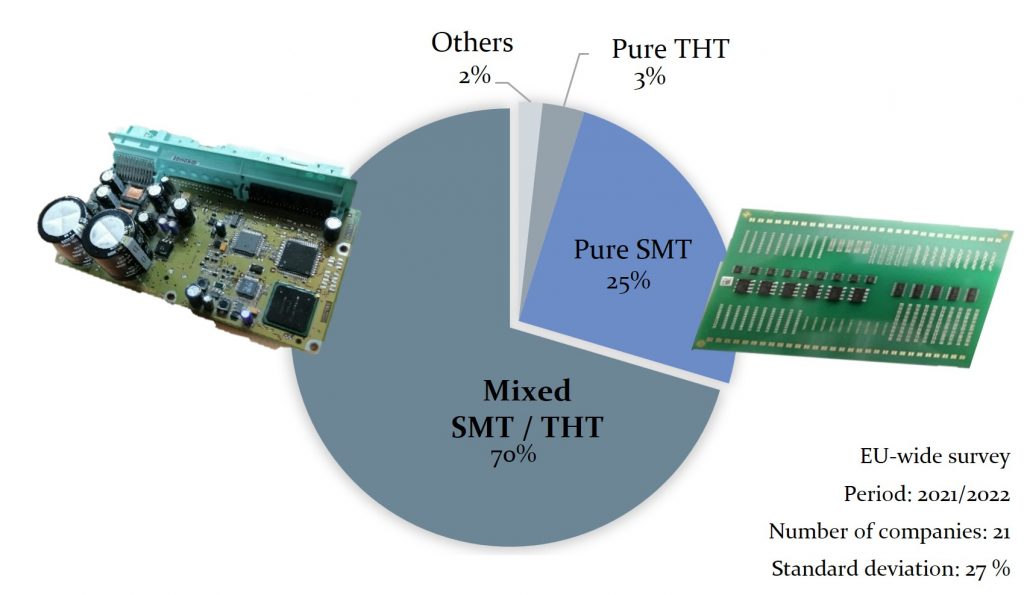Why THT Still Wins Where Reliability Matters: High Voltage, High Power, No Compromise
For electrical, thermal, and mechanical reasons, THT components cannot be replaced by SMT parts in many applications. Especially in harsh environments—military, aerospace, or where high reliability is required in automotive and energy—mechanical, electrical, and thermal robustness of components and solder joints is critical.
“High Voltage Needs Space—And THT”
An analysis of roughly 2,800 capacitors available on the market shows a clear link between package type, operating voltage, and capacitance. High‑voltage parts with large capacitance were primarily THT. At higher operating voltages, there are far fewer components with large capacitances. The higher the operating voltage, the greater the spacing required between the poles to store the same energy without dielectric breakdown.

The result: larger component volumes that can only be processed reliably in THT soldering.
“Why Liquid Solder Beats Hot Air”
Because liquid solder transfers heat far more efficiently than hot air, these large components are still soldered using THT today. A similar mechanism applies to inductors and power transistors. Since these components are technically necessary for today’s high‑power assemblies, we see this everywhere: THT is crucial, even if less talked about than SMT.
“Mixed Assemblies Are the Norm”
Almost every electronic assembly has at least one THT component and is therefore a mixed assembly of SMT and THT parts. That’s backed by our market research. When we asked manufacturing companies from different segments, especially automotive, industry and EMS, how their active product mix breaks down between SMT and THT, the picture was clear: not either/or, but THT and SMT.

Responses varied between 60% and 99% depending on company, size, and application. In the end, you can say roughly three quarters of assemblies also involve THT soldering.
To protect previously placed SMT parts during THT, you have two options:
1. Selective wave soldering
2. Wave soldering with pallet
“Simulate Before You Prototype”
Both options come with advantages and trade-offs in productivity and process limits. You can find out by running costly prototypes. Alternatively—and complementarily—the Solder Copilot, a digital twin of the THT soldering process with a simulation‑based approach, can flag problem areas before prototypes and provide valuable insight into the process.
Do you know your hidden costs in the THT production step?
Identify risks before prototypes. Use the Solder Copilot to simulate your THT process and uncover cost drivers within minutes, not months.

